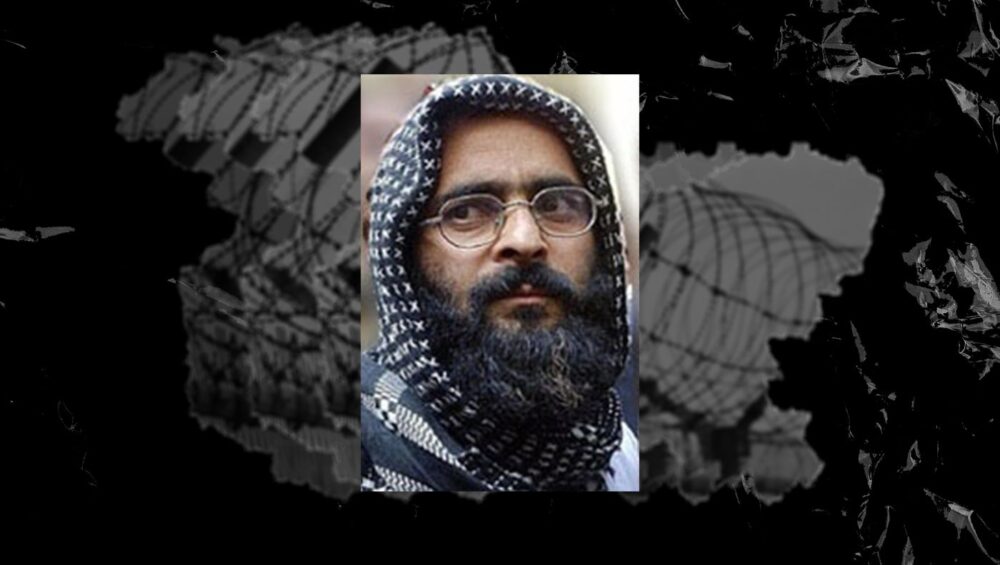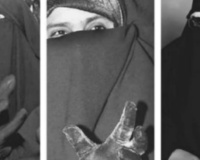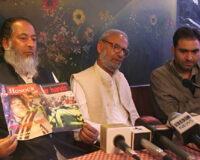Sheikh Farkhanda
On 11 February 1984 a 45 year old Kashmiri man Maqbool Bhat, considered to be architect of Kashmir’s first armed rebellion, was sent to gallows inside India’s infamous detention centre Tihar Jail, west of New Delhi, the capital of the Indian state. Maqbool was buried unceremoniously inside Tihar Jail and today two graves are still awaiting the mortal remains of Kashmir’s charismatic resistance figure, one in Trehgam, his ancestral village in district Kupwara, north of Kashmir, and second in the martyr’s graveyard in Srinagar, the summer capital of the disputed region. Bhat grew up under the tyrannical feudal system of Dogra rule that left indelible marks on his political ideology and paved the way for his further endeavours on Kashmir. Bhat’s struggle against injustices meted out to his people
– from heading the student activists of plebiscite front (PF), crossing over to Azad Kashmir and launching his own Magazines in Peshawar and forming, with his fellow rebel friends, the Jammu and Kashmir Plebiscite Front (JKPF) and laying foundation of Kashmir’s first armed resistance group to sneaking back into the valley and landing in Tihar Jail – tells us about the heart of a rebel reluctant to bow down even in the life ceasing circumstances and continuing to hold the torch of justice with genuine enthusiasm. Maqbool Bhat’s execution is one of the markers in Kashmir’s political history of sacrifice and struggle. It shaped up popular struggle for Kashmir’s right to self determination, like many others – Burhan wani , Manan Wani, Riyaz Naikoo, Shamsul haq , Sadaam padder , Firdous Kirmani, Ashfaq Majeed, Zakir Musa and every other Kashmir rebel after and before him. Convicted of alleged murder, Bhat’s hanging in was to assuage public anger over the abduction and killing of Indian diplomat Ravindra Mahatre from Indian consulate in Birmingham, UK by Jammu Kashmir National Liberation Front ( JKNLF) members who wanted Bhat’s release but killed the diplomat only after two days of his abduction. Most Kashmiris, however, believe that the Indian political system has used Kashmiri bodies to satisfy the collective conscience of Indian people who have been supporting the horrendous policies of its different governments to stifle down the voices of dissent in the valley. The path that Maqbool chose for himself was rife with dangers affecting his family and friends and also resulting in the death of his brother who was killed in a fake encounter by Indian military in the year 1995. Well aware about the consequences of standing firm against the military occupation of his homeland, Bhat’s life will remain as a torchbearer for oppressed nations across the globe.
29 years after the hanging of Maqbool Bhat, Indian authorities, in a similar fashion, hanged to death another Kashmiri Muhammad Afzal Guru, charged with waging war against the Indian state and its institutions. The case of Guru is criticized for its dodgy investigation and for the complete absence of a fair trial. However, an overwhelming majority of Kashmiris feel that the Indian judiciary system is an apparatus of a colonial state that helps Indian authorities to silence Kashmiris. A supreme court judgement on Guru’s case mentions that, “the incident, which resulted in heavy casualties had shaken the entire nation, and the collective conscience of the society will only be satisfied if capital punishment is awarded to the offender.” Authors from India like Arundhati Roy and Gautam Navlakha termed the hanging of Afzal Guru as “Judicial murder.” The Indian custom of satisfying the collective conscience of their society with the blood of Kashmiris was once again on display. This gory practice of satiating the hunger of a frenzy mob having toxic nationalistic tendencies has been consuming the most pure and pious souls from the unfortunate vale of Kashmir. Kobad Ghandy, a famous Indian left activist says:
Afzal Guru was a humanistic person. The staff was lined towards the wall on the day of his hanging. While walking towards the gallows Afzal Guru complained about the conditions of the staff and pleaded to improve their conditions. The staff was in tears.
Framed under false charges as every other Kashmiri is, Afzal Guru’s body was not handed to the next of his kin for a proper burial and instead was interred in a grave dug inside the premises of Tihar Jail next to the grave of Maqbool Bhat. Much like Maqbool Bhat’s two empty graves, an empty grave awaits the mortal remains of Afzal Guru in Srinagar’s martyr’s graveyard. The hollow graves awaiting their dead men are symbols of remembrance and resistance and are, beyond any doubt, the living examples of never dying spirit of Kashmiris resisting the occupational structures in their homeland. An inscription in Urdu language on the gravestone of Muhammad Afzal Guru reads:
Jis ki Jisd-e-khaaki hukoomat-e-hind kay pass amanat hai, qoam ko uski wapsi ka intizaar hai
The hanging of Guru sparked widespread protests in the disputed region of Jammu and Kashmir with people coming out on streets and shouting pro-freedom and pro-Islamic slogans. Not only did the government of India refuse to hand over the dead body of Guru, his family members were also kept in dark and the execution was done secretively except that some political pimps in Jammu and Kashmir were informed so that the anti India sentiment can be put under check and remains isolated and not turn into a systematically organised anti-occupation campaign.
The day when Maqbool Bhat was taken to gallows, nobody knew that the Indian state had just set a precedence and the phenomenon of not handing the bodies of those who stood against the military occupation will, in the years to come, snowball into a full-blown militaristic campaign against Kashmiris. For the first time in the history of Kashmir’s resistance against subjugation and denial of basic human rights, the bodies of young ethnic rebels of the valley are not being handed over to their families and instead are buried silently far away from their localities. The Indian authorities have been weaponizing the covid-19 and under the pretext of covid protocols the families of those who are fighting Indian rule in Kashmir are denied the right to mourn. The bodies are taken, in the darkness of night, to some far off places like Sonamarg, Uri, and Handwara and lowered in the graves improperly dug by land excavators. The fast growing graveyards at these places are overshadowing the soul soothing sceneries these places are known for. Hundreds of Kashmiri boys including top commanders of Hizbul Mujahideen, the largest indigenous armed group fighting forcible Indian rule have been buried, often in the absence of proper Islamic rituals, hundreds of kilometers away from their ancestral villages and towns. The graveyards are overlooked by military bunkers and thus the dead, besides the living ones, are under continuous vigil of the occupational regime. The situation in the valley is so grim that the families of those killed in confirmed fake encounters and alleged gunfights only demand the dead bodies of their loved ones and not raising questions on the nature of killings knowing well that all Kashmiris are what Ather Zia, a Kashmiri anthropologist calls as ‘killable’.
Tokhsur yelli gase shethrwen panjran
Adeh hai neran saen arman
Baaleh yar yelli sheen gali
Adeh hai neran saen arman
When the cages will be decimated
Our dreams will come to life
When snow will melt from mountains
Our dreams will come to life
-Maqbool Bhatt (prison song)
Sheikh Farkhanda is a media student at International Islamic University, Islamabad and hails from Indian Occupied Kashmir- A country without a post office, A place where breathing is resistance and life is a luxury! Where dead talk resistance, living is an art and wounded bodies are memorials!






